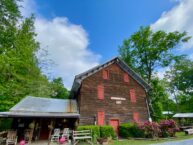WASHINGTON, DC – President Obama’s administration moved this week to protect the Arctic National Wildlife Refuge in Alaska, widely considered one of the most spectacular and remote areas in the world.
The Department of the Interior is releasing a conservation plan for the refuge that for the first time recommends additional protections, and President Obama announced he will make an official recommendation to Congress to designate core areas of the refuge – including its Coastal Plain – as wilderness, the highest level of protection available to public lands.
“If Congress chooses to act, it would be the largest ever wilderness designation since Congress passed the visionary Wilderness Act over 50 years ago,” the administration said in the announcement.
But of course the proposal, unveiled by the Interior Department in a press release on Sunday, ran into a Congressional roadblock immediately on Capitol Hill, where Republicans now control both chambers and seem more determined than ever to take a pro-big business, anti-environmental slant.
“Designating vast areas in the Arctic National Wildlife Refuge as Wilderness reflects the significance this landscape holds for America and its wildlife,” Secretary of the Interior Sally Jewell said in the announcement. “Just like Yosemite or the Grand Canyon, the Arctic National Wildlife Refuge is one of our nation’s crown jewels and we have an obligation to preserve this spectacular place for generations to come.”
Today’s action builds upon years of public engagement by the U.S. Fish and Wildlife Service to revise the Comprehensive Conservation Plan and complete an environmental impact statement for the Arctic National Wildlife Refuge, as required by law. The plan will guide the Service’s management decisions for the next 15 years.
Based on the best available science and extensive public comment, the Service’s preferred alternative recommends 12.28 million acres – including the Coastal Plain – for designation as wilderness. The agency also recommends four rivers – the Atigun, Hulahula, Kongakut, and Marsh Fork Canning – for inclusion into the National Wild and Scenic Rivers System.
Currently, over 7 million acres of the refuge are managed as wilderness, consistent with the Alaska National Interest Lands Conservation Act of 1980. However, more than 60 percent of the refuge – including the Coastal Plain – does not carry that designation.
Designation as wilderness would protect and preserve the refuge, ensuring the land and water would remain unimpaired for use and enjoyment by future generations. But only Congress has the authority to designate Wilderness areas and Wild and Scenic Rivers.
Recommendations for Wilderness or Wild and Scenic River designations require approval of the director of the Fish and Wildlife Service, the Secretary of the Interior and the President. The Fish and Wildlife Service released the revised comprehensive conservation plan and final environmental impact statement for the Arctic National Wildlife Refuge on Sunday. While the agency is not soliciting further public comment on the revised plan, it will be available to the public for review for 30 days before publication. Then the President will make the formal wilderness recommendation to Congress.
“The Arctic National Wildlife Refuge preserves a unique diversity of wildlife and habitat in a corner of America that is still wild and free,” said Fish and Wildlife Director Dan Ashe. “But it faces growing challenges that require a thoughtful and comprehensive management strategy. The incorporation of large portions of the refuge into the National Wilderness Preservation System will ensure we protect this outstanding landscape and its inhabitants for our children and generations that follow.”
The revised plan addresses the protection of wildlife populations and their habitats, opportunities for recreation, subsistence needs of local inhabitants, among other things. It also strengthens wildlife and habitat monitoring, as well as the monitoring of public use of the refuge so as to better respond to changing conditions on the landscape, particularly those associated with climate change.
The 19.8 million acre Arctic National Wildlife Refuge is home to the most diverse wildlife in the arctic, including caribou, polar bears, gray wolves and muskoxen. More than 200 species of birds, 37 land mammal species, eight marine mammal species and 42 species of fish call the vast refuge home. Lagoons, beaches, saltmarshes, tundra and forests make up the remote and undisturbed wild area that spans five distinct ecological regions.
The refuge holds special meaning to Alaska Natives, having sustained their lives and culture for thousands of years. The Gwich’in people refer to the Coastal Plain of the refuge as “The Sacred Place Where Life Begins,” reflecting the area’s importance to their community, maintaining healthy herds of caribou and an abundance of other wildlife.
For more information, the public can see the plan online here.














